‘How do you implement clicker training under saddle?’, is a question many equestrians ask themselves. The answer is simple: the same way you implemented it from the ground.
This can be very challenging because, once we are in the saddle, we have to deal with so many unconscious rules, habits, norms and thoughts about riding that interferes with successful clicker training.
This makes it extra hard to use positive reinforcement successfully under saddle. We are not aware of the many traditions we actually have and how much of those are in straight contradiction with positive reinforcement training.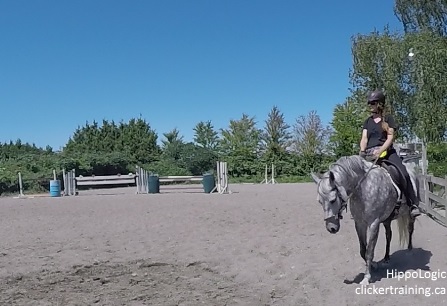
Become conscious of your training expectations
When you started to teach your horse Key Lesson Table Manners or Key Lesson Targeting, your first session was maybe 10-15 treats (clicks) long. That’s less than 5 minutes! Then you stopped and gave your horse a break, right? You know can achieve so much in 5 minutes or less.
Once you mounted you maybe expect yourself to be in the saddle for 50 minutes or even for an hour. The length of a normal riding lesson. Now you have let go of that idea, if you want to become successful implementing R+ under saddle when you start. On the ground you didn’t start with an hour of clicker training (hopefully), so why do this under saddle?
Your training sessions, now your riding sessions, need to be fun, sweet and short for your horse. You need to stop training a particular exercise when your horse gave his best. That can be achieved in a few clicks already.
Therefor you need a back up plan: What will you do, if your horse accomplished your criterion? I will address that in the next blog (Key Lesson for Riders #2 Training Plan).
Key Lesson for Riders #1: Learning Theory
You have to study the principles of learning and motivation in order to get the best out of your riding. In my online home-study program I explain these principles and how you successfully implement them in your training and riding. Knowing them is one thing, using them in your daily training is another. They are called Key Lessons because they are the Key to your Success!
Learning Theory is based upon what science calls operant conditioning:

Here are 3 of the most important tips that will help you implement the learning theory under saddle.
Tip 1 Implementing the Learning Theory
In order to train your horse you have to know as much as possible about horse behaviour, their natural needs and it also helps to know about their physiology. This helps you to set your horse up for success.
Example: Study *) has proven that whither scratching help calm a horse under saddle. This works better than neck patting.
Tip 2 Implementing the Learning Theory
Know what is reinforcing to your horse. If you know about the natural behaviour it’s easier to guess what is reinforcing for them. We are generally reinforced by things as compliments, money or chocolate cake, horses are not.
They are grazers, herbivores, and since that is their normal diet choosing something they like to eat naturally will be a good primary reinforcer.
My horse Kyra was born in a nature reserve and when I got her, 3 weeks after she was captured, she didn’t eat apples, carrots or extruded dinner grains. So I had to find other reinforcers to train her. Since she was also terrified of humans approaching her, scratches as reinforcements where off the table, too. First I had to find out what she liked.
Tip 3 Implementing the Learning Theory
You have to know what your horse considers punishment.
If you think you reward your horse with neck patting, like you probably have learned from your riding lessons, think again: If you get more of the desired behaviour it was reinforcing, but if it didn’t it was neutral. If you get less of the behaviour it was punishing according to your horse.
Knowing the difference between reinforcers and punishment will greatly help you succeed in training.
Example: we all know mugging horse behaviour. Some horses kick their stall doors in order to… Yes, what do they want?
And what usually happens? They get what they want: attention or food.
We think we deliver a punishment by shouting at them, but if the behaviour is not decreasing there is something that is actually reinforcing the door kicking (attention or their breakfast). I have an excellent shaping plan to get rid of mugging behaviour and door kicking.
Let’s recap the basics of setting yourself up for riding with positive reinforcement:
- Use the learning theory
- Know what your horse finds reinforcing
- Know what your horse considers punishing
- Keep your sessions short and give breaks after accomplishing a criterion
- Become aware of your expectations (‘riding needs to be an hour long’) and other customs or habits you have (‘the horse is only one treat allowed after the ride’) that will interfere with an optimal learning set up for your horse (short, sweet sessions that are easy enough to understand, yet challenging enough to keep your horse engaged).
I hope this blog gave you some valuable insights. If it did, please share this blog with your friends.
Join our Community!
- Are you looking for professional positive reinforcement advice?
- Do you want an affordable program?
- Do you want to turn your equestrian dreams into reality, but you don’t know where to start?
If you have answered ‘Yes’ to one or more of the above questions look into one of the online programs HippoLogic has to offer.
Join our community for online positive reinforcement training tips, personal advice and support in training your horse.
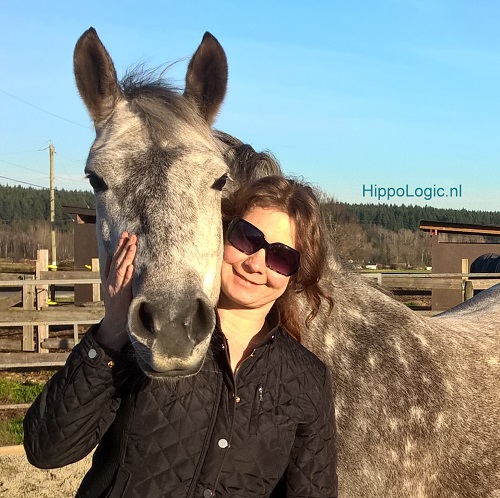
Sandra Poppema, B.Sc.
I help horse owners get the results in training they really, really want with joy and easy for both horse and human. I always aim for win-win!
Sign up for my newsletter (it comes with a gift) here: HippoLogic’s website.
Start for free!
Book a free 30 minute Connection Call to get a glimpse of a new future with your horse. In this conversation we’ll explore:
- Your hopes and dreams and goals so that we can see what’s possible for you and your horse

Your Key to Success
- Where you’re now, where you want to go and which path is right for you
- What’s holding you back so you can make a plan to get these hurdles out of your way.
At the end of the call I’ll give you some ideas and advice for your next step and if it looks like a fit, we can explore what it looks like to work together.
Simply check the best time for you in my online calendar and click to reserve your free call today.
Sources: Physiological and Behavioral Responses of Horses to Wither Scratching and Patting the Neck When Under Saddle Zoë W. Thorbergson,Sharon G. Nielsen,Rodney J. Beaulieu &Rebecca E. Doyle

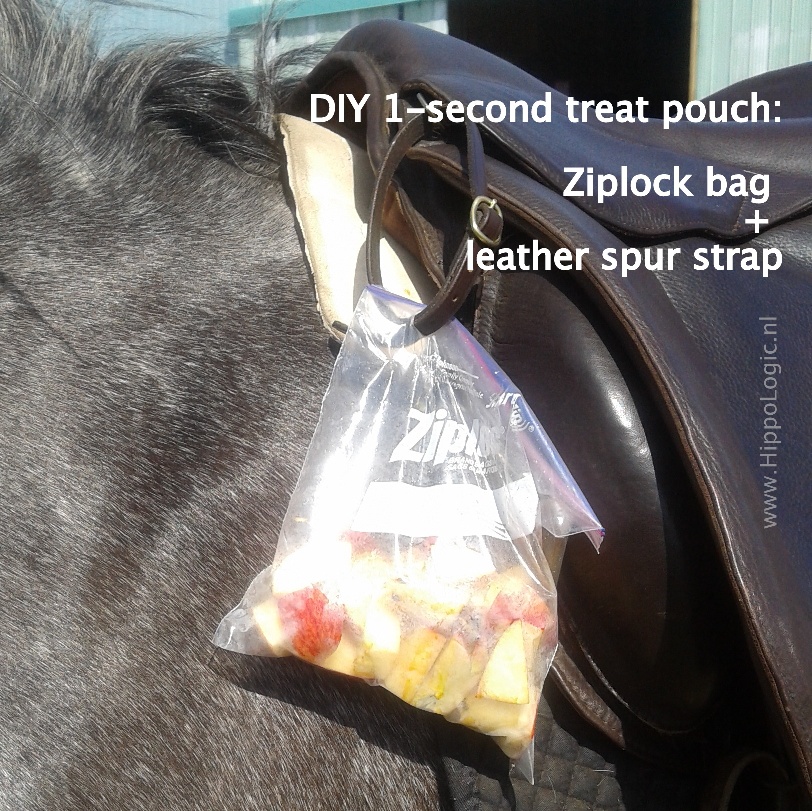
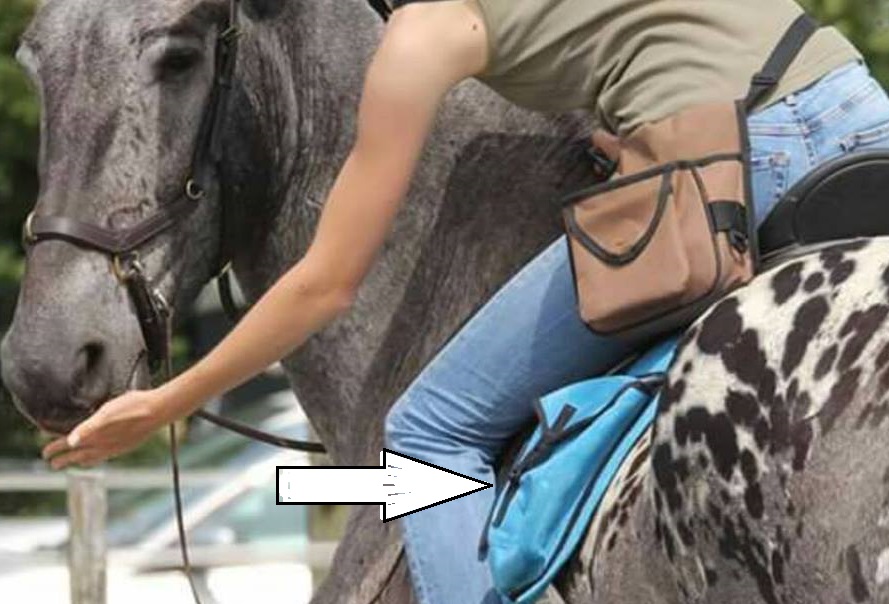
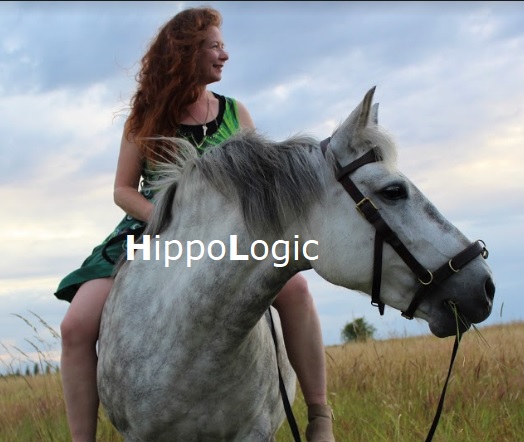





 Do you want a training journal that helps you improve your riding skills? Don’t use it as a diary, use it as the powerful training tool it can be. In a diary you write down what you’ve done and how you felt about it. My training diaries from 20 years ago are all similar and I read things like: ‘I rode, it was fun but the canter sucked. I did 3 tracks and every time my pony fell to trot all by himself.’ Maybe I added my opinion about my pony that day, but this is not constructive and didn’t help me improve and develop my skills.
Do you want a training journal that helps you improve your riding skills? Don’t use it as a diary, use it as the powerful training tool it can be. In a diary you write down what you’ve done and how you felt about it. My training diaries from 20 years ago are all similar and I read things like: ‘I rode, it was fun but the canter sucked. I did 3 tracks and every time my pony fell to trot all by himself.’ Maybe I added my opinion about my pony that day, but this is not constructive and didn’t help me improve and develop my skills.



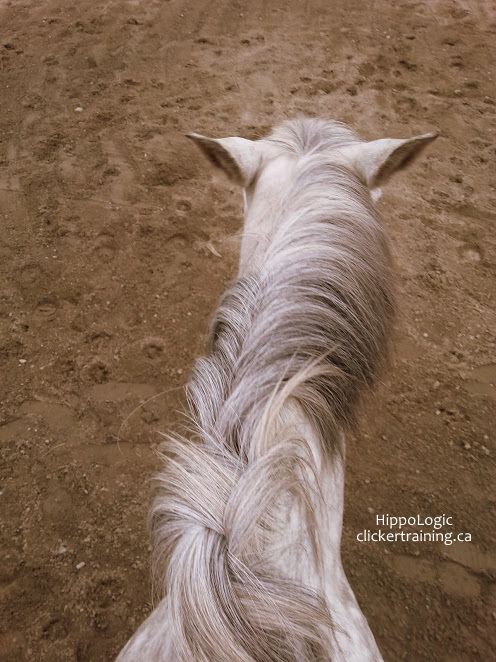





You must be logged in to post a comment.